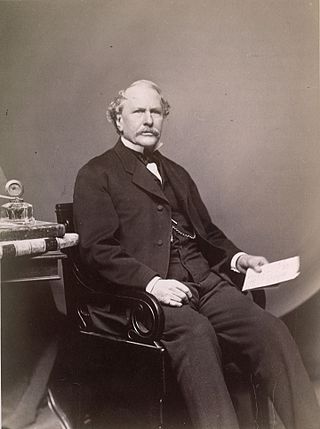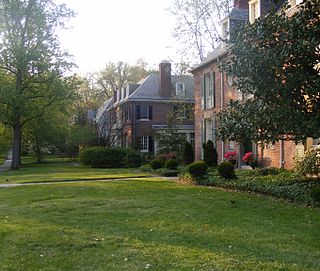
The 1908 United States presidential election was the 31st quadrennial presidential election, held on Tuesday, November 3, 1908. Republican Party nominee William Howard Taft defeated three-time Democratic nominee William Jennings Bryan.

The Baltimore Sun is the largest general-circulation daily newspaper based in the U.S. state of Maryland and provides coverage of local, regional, national, and international news.

The St. Louis Post-Dispatch is a major regional newspaper based in St. Louis, Missouri, serving the St. Louis metropolitan area. It is the largest daily newspaper in the metropolitan area by circulation, surpassing the Belleville News-Democrat, Alton Telegraph, and Edwardsville Intelligencer. The publication has received 19 Pulitzer Prizes.

The Baltimore News-American was a broadsheet newspaper published in downtown Baltimore, Maryland until May 27, 1986. It had a continuous lineage of more than 200 years. For much of the mid-20th century, it had the largest circulation in the city.
Roland Park is a community located in Baltimore, Maryland. It was developed between 1890 and 1920 as an upper-class streetcar suburb. The early phases of the neighborhood were designed by Edward Bouton and Frederick Law Olmsted Jr.

Arunah Shepherdson Abell was an American publisher from New England who was active in Pennsylvania and Maryland. Born in East Providence, Rhode Island, Abell learned the newspaper business as an apprentice at the Providence Patriot. After stints with newspapers in Boston and New York City, he co-founded the Public Ledger in Philadelphia and later independently founded The Sun of Baltimore, Maryland; both were penny papers to appeal to the working class. Abell and his descendants continued ownership of The Sun as a family business until 1910.

Brock Pemberton was an American theatrical producer, director and founder of the Tony Awards. He was the professional partner of Antoinette Perry, co-founder of the American Theatre Wing, and he was also a member of the Algonquin Round Table.

Frank Andrew Munsey was an American newspaper and magazine publisher and author. He was born in Mercer, Maine, but spent most of his life in New York City. The village of Munsey Park, New York is named for him, along with the Munsey Building in downtown Baltimore, Maryland at the southeast corner of North Calvert Street and East Fayette Street.

Abell is a neighborhood located in the north-central area of Baltimore, Maryland, United States. It is considered to be part of Charles Village, Baltimore.
The following are the Pulitzer Prizes for 1933.

A. Aubrey Bodine (1906–1970) was an American photographer and photojournalist for The Baltimore Sun's Sunday Sun Magazine, also known as the brown section, for fifty years. Bodine is known for his images of Maryland landmarks and traditions. Bodine's books include My Maryland, Chesapeake Bay and Tidewater, Face of Maryland, Face of Virginia, and Guide to Baltimore and Annapolis.
Otto Eugene Adams (Sr.), the architect, was born in Baltimore, Maryland, on November 1, 1889, to a family with Baltimore and German ancestry.

Guilford is a prominent and historic neighborhood located in the northern part of Baltimore, Maryland. It is bounded on the south by University Parkway, on the west by North Charles Street, Warrenton and Linkwood Roads, on the north by Cold Spring Lane and on the east by York Road. The neighborhood is adjacent to the neighborhoods of Tuscany-Canterbury, Loyola-Notre Dame, Kernewood, Wilson Park, Pen Lucy, Waverly Oakenshawe, Charles Village, and the universities of Johns Hopkins and Loyola University Maryland. The neighborhood was added to the National Register of Historic Places in 2001.

The Munsey Trust Building was a historic high-rise office building located in Washington, D.C., United States, on E Street, N.W., between 13th and 14th Streets.

Frank Richardson Kent (1877–1958) was an American journalist and political theorist of the 1920s and 1930s whose Baltimore Sun column "The Great Game of Politics" was syndicated nationally.
Lawrence Berry Washington was an American lawyer, military officer, author, Forty-niner, border ruffian, and a member of the Washington family. Washington was born on his family's Cedar Lawn plantation near Charles Town, Virginia and was the eldest of 13 children. He practiced law, then served as a second lieutenant in the Virginia Volunteers during the Mexican–American War. During his service in the war, Washington reportedly wore the sword of his great-granduncle George Washington.
Price Day (1907-1978) was a war correspondent for the Baltimore Sun who won a 1949 Pulitzer Prize for International Reporting.

Herbert L. Lewis (1898-1971) was an American journalist and newspaper editor. He was the editor of the St. Paul Pioneer Press from 1949 to 1964 and a longtime contributor to the New York Times, who played a key role in transforming St. Paul into a model of good government.
The Baltimore Banner is a news website in Baltimore founded by the Venetoulis Institute for Local Journalism, which is a nonprofit set up by Stewart W. Bainum Jr. It launched June 14, 2022.













